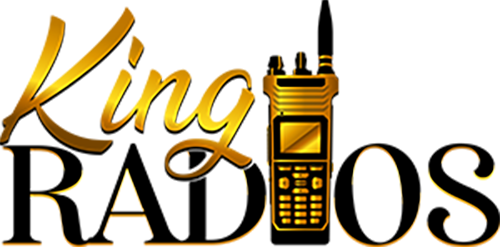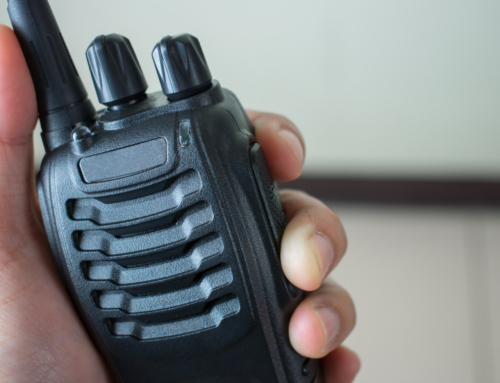Wondering what the basics of public safety radio are?
This technology is always changing, but if you’re considering a career in public safety, it’s a good idea to know how this communication tech might affect your job. Public safety communications are one of the most important parts of the job – without a way to communicate, safety personnel would struggle to protect the public.
In this guide, we’ll walk you through the basics of public safety communications, and give an overview of the kind of technology involved. Whether you’re looking into an industry career or are just curious, keep reading to learn more.
Why the Basics Matter
Technology is developing with each new day, and that includes public safety communications. The communications systems given to public safety personnel seem to be getting more complicated, while the workers are still expected to figure out how to use each new system.
However, with all these changes, it’s easy to forget that the basics matter. Without a knowledge of the basics, there’s no way for these professionals to learn the newest tech on the market.
Many managers of communication centers focus on the latest, glitzy products that can make their department seem more cutting edge. However, the staff might not even understand the technology in their hands, since they were never trained on the basics of public safety radio.
Many companies are designing these new communication products and expecting public safety staff to adjust to the technology, but in truth, it should be the other way around. In the quest for the next big technology, the needs of the personnel using it become lost. If the industry re-focuses on the basics, it can make this new technology much more useful to the public safety sector.
Now, let’s take a look at the basic knowledge that would help public safety workers use technology more effectively.
1. Understanding of the Equipment
Every kind of wireless communication technology transmits radio waves to communicate. These waves send data and sound through the air, invisibly.
These waves need both a receiver and a transmitter to be used for communication. Although each part of the equipment has its own technical terms, the basics are that something needs to send the information and something needs to take it in and translate it.
The transmitter side of the equation takes a message, which can be in the form of voice, text, a picture, or something else. Then, it encodes that message in the form of a wave. The message is encoded using frequency modulation.
Next, the wave is transmitted to the receiver, where it is decoded. Each side uses an antenna to accomplish this. Antennae are simple metal rods that can catch and send waves.
Some devices, like cell phones, have both transmitting and receiving capabilities and can do both at the same time. Radio towers on communications buildings help send the waves where they are needed.
2. Frequency and Bandwidth Knowledge
Waves have a characteristic known as their frequency. “Frequency” measures how many times a wave moves up and down in one second. The per-second cycle of the wave is called a Hertz.
Hertz can be measured in kilohertz (thousands) or megahertz (millions). So, for example, a radio at 800 megahertz broadcasts 800 million cycles in a second.
The higher the frequency, the shorter the wavelength. On the electromagnetic spectrum, the radio frequency part is sometimes called the “radio spectrum.” The spectrum is a chart that tells you which parts of the spectrum, known as “bands,” every wireless technology can be transmitted on.
Every type of wireless communication has a band: TV channels, AM/FM radios, and even cell phone providers. The amount of space the frequency takes is called its bandwidth.
3. Digital or Analog
Cell phones and TV now use entirely digital waves, rather than analog ones. Most police and public service communications use a mix of digital and analog.
Analog waves send electrical signals that change in intensity and use modulation. However, these waves can easily be interrupted by outside factors, like storms.
With analog waves, only part of the signal can be disrupted, so partial transmissions can still be sent during a storm or another disruptive event. However, digital waves send all the information as segments of mathematical codes.
Environmental disturbances are much less likely to interrupt a digital wave. However, if one of these waves is interrupted, all the content is lost, and not even a partial message will get through.
Background noise can also disrupt digital waves, so a lot of professionals still believe analog waves are better for public safety radio. However, many companies are researching digital wave technology and developing new ways to make it better. Someday, that technology will result in clean, clear communications every time.
4. Narrow or Wide Band
The radio spectrum has limited room, which means that the frequencies sent have to be regulated so they’re efficient and won’t interfere with other signals.
Transmissions that are “wide band” take up more frequency space. However, transmitters and receivers can be designed to be narrow-band, so the communications will take up less space.
With narrow-banding, the same frequency can be used for more radios without interference. However, the data speed goes down as more radios are added to the frequency.
Today, narrow-banding is required by the FCC.
5. Regulation
All of these communications are regulated by the FCC in America. This organization regulates communications within the country, and internationally, including television, satellite, wire, and cable.
Congress oversees the FCC, which is an independent government agency. The National Telecommunications and Information Administration also plays a role in regulating communications – it covers the federal use of the technology, while the FCC governs any other use.
The Importance of Public Safety Radio
Firefighters, EMTs, and other public safety workers use radios to communicate their needs and handle situations and disasters.
With a good understanding of the technology, these workers can do their jobs better. As new improvements to the tech come along, a solid understanding of the basics helps those improvements make sense.
We’ve been providing firefighters with the radios that help them do the job for many years. Learn more about us here.






Leave A Comment
You must be logged in to post a comment.